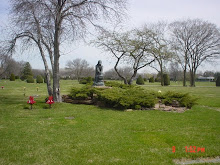*O ye messengers, eat of the good things and do good. Surely I am Knower of what you do. *
With much to do about Palestine and the Holy City of Peace named Jerusalem. What is all the fuss over it?
According to the Maulana Muhammad Ali's Holy Qur'an the meanings and interrputions of words in the Holy Qur'an can affect the whole dynamics of the issue. In the Arabic English Lexicon by Edward William Lane the words Rabwah and qarar in the Holy Qur'an have been used to describe the wrong places. While Rabwah denotes as 'loftyground'. Qarar symoblizes 'cultivated land' and 'a place where water rests in a meadow'. Both of which are metaphors for a place, time and story.
While many persons attribute these places as being one of the following Palestine, Damascus, Egypt, and Jerusalem. Maulana MuhammadAli clearly disputes this in his commentary of the Holy Qur'an. He specifically states it is Kashmir. With alot of detailed work to confirm his anaylsis.
He points out the fact that many villages in Kashmir have the names of places from Palestine. The presence of a tomb of Nabi. Translated as 'the prophet' many believe to belong to Isa (arabic for Jesus) and the man known as Yuz Asaf. This tomb is located on the Khan Yar(Strinagar) street in Kashmir. He indicates as the capital. His thesis is that this is the only tomb known of Isa with no belief there is a tomb in Palestine.
In order to prove this thesis, Muhammad Ali, sets forth very compelling arguments. Starting with an unwritten handed down belief of a foreigner named Yuz Asaf from 2,000 years ago in Kashmir. In theTarikh A'zami it is referred to as the tomb of a prince from a foreign land. This reference was written about the year 1751. There is an older written documention from a thousand years ago called the Ikmalal-Din. It indicates this same man as a journeyer who stopped in various places. The last reference is the story of Barlaam and Josaphat in a very old version by Joseph Jacobs. In which Josaphat is believed to be Yuz Asaf who died in Kashmir.
Yuz Asaf is very close to Yasu the hebrew word for Jesus. Both of these persons are related to the "Barlaam and Josaphat" account inthe Holy Bible and the Holy Qur'an. The arabic name for gospel 'bushra' is believed to be used by Yuz Asaf himself. MuhammadAli notes the Islamic story of Jesus not dying on the cross. With Jesus fleeing after the crucification is believed and taught by the Prophet Muhammed himself.
Truly implicating one aspect of so much undue violence by numerous peoples over many milleniums. Yet, this begs the questions. Were Jesus, Isa or Yuz Asaf's remains being protected from the time of his death? Was the Prophet Muhammed trying to correct history? At the same time trying to protect Isa's tomb?
All roads lead to, where else, Palestine. So, what could the Muslimsbe safeguarding in the Holy Land if they believe Isa's tomb is in Kashmir?
My best estimate can only be the Cave of Machpelah in Hebron. Dr. Henry H. Halley is the source I have for my perception in regards to an answer. My thesis relates to his reference under the topic "Sarah's Death"** in his book.
Long ago in a Mosque where the cave is located. With the direction ofthe Sultan, the Prince of Wales in 1862 embarked and ascertianed the only outside knowledge of this cave. The Prince, according to Dr. Halley, saw the tombs of Abraham, Isaac, Jacob, Sarah, Rebekah, and Leah in what is considered the Cave of Machpelah. In addition, to what many consider the real cave located at the bottom of the upper passage there is a subterranean chamber that had not been accessed since the12th century. Though there is no mention of what the Prince may or may not of seen.
An answer that just leads to more questions. As, Marston Bates said research is "The process of going up alleys to see it they are blind". For this to be summed up in written work can not fully suffice the matter.
References to *, ** as cited below:
* The Holy Qur'an Arabic text, English translation and Commentary byMaulana Muhammad Ali.
** Halley's Bible Handbook by Dr. Henry H. Halley.
by Ravin Black August 2006 redone July 2007
Subscribe to:
Post Comments (Atom)



No comments:
Post a Comment